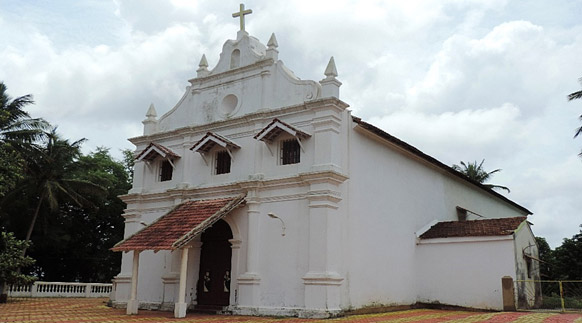
No matter how many times you go to Goa, you will discover
something new. So next time you head there don’t forget to go to the leafy village of
Gandaulim around 15 km away from Panjim, where you will come across the Church of St. Blaise.
This little outpost is all that remains of Goa’s Croatian connection. It is hard to
imagine that a small trading town in the Balkans, in Europe, had an outpost in Goa, 500 years
ago.
The story of this link between Goa and Croatia is
fascinating.
From the 14th century onwards, Croatia, in Eastern Europe was a
collection of independent trading towns of which the most prominent was Dubrovnik. These trading
towns had links across the world and it was the quest for Indian spices and textiles that
brought traders from Dubrovnik to Goa. The spice trade from India to Europe was extremely
profitable for these Croat merchants. For instance, pepper purchased in Calicut for 4 Ducats,
was sold in Venice for 56 Ducats! To facilitate this trade, they established a settlement or a
‘colony’ where the Gandaulim village stands today.
There was a good reason why the Croats settled in Goa, because in
the 16th century, it was the hub of Portugal’s trading empire in Asia. The fame of
‘Goa Dourada’ or ‘Golden Goa’ known for its wealth of spices and
diamonds, spread around the world. The grand churches, mansions and boulevards of what is today
known as ‘Old Goa’ were said to rival Lisbon in splendor. As a result, it became a
magnet for merchants, travellers and adventurers from around the world. In fact, today’s
Gaundalim village, once the site of the Croatian colony, is located just 3 kms from Old Goa and
may well have been a suburb of the medieval metropolis.
Sources suggest that the Dubrovnikers arrived in Portuguese Goa
sometime between 1530 -1535 CE and later founded their own colony, Sao Braz, named after their
patron saint St. Blaise. This church was built around 1563 CE.
Sao Braz was a thriving colony with 12,000 residents but pretty
quickly, disputes with the Portuguese spelled trouble. By the 1570s trade between the Croats and
Indians began to decline.
Over time the settlers also dwindled. We do not know how many
settlers actually remained there. The last straw was the great earthquake of 1667 CE, which
completely destroyed Dubrovnik and its prosperity. After the earthquake, it no longer had the
financial or the military power to trade with India or establish any presence here. Another
factor for the decline of the Croatian trade in Goa was the fact that by 17th century CE,
Portuguese had lost their monopoly over spice trade to the Dutch and the British, who favored
other ports. Goa was no longer a major trading hub.
People had forgotten about this Croatian colony, until 1999, when
a Croatian Indologist Zdravka Matisic discovered texts that spoke of the colony in Goa. This
created a flurry of interest in Croatia. However, even today, very little research has been done
on the colony, when it began, how it was and when it was finally abandoned.
Today, Goa has once again become an international tourist hub and
this has reignited interest in its unique past. The Church of St Blaise now gets inquisitive
visitors who come to see this quaint church and how it connects Goa and Croatia.
So, the next time you plan a holiday to Goa and want to spend a
few days soaking in the history and culture along with its scenic beauty, you are just a click
from availing a Holiday Loan,
which comes with a 2 month EMI holiday immediately after loan disbursal and many other
benefits.
Beat the heat and turn your dream summer vacation into a reality
with a Personal Loan from Axis Bank..
Disclaimer: This article has been authored by Live History India Digital; a Mumbai
based Digital Content Company. Axis Bank doesn't influence any views of the author in any way.
Axis Bank & Live History India Digital shall not be responsible for any direct / indirect
loss or liability incurred by the reader for taking any financial decisions based on the
contents and information. Please consult your financial advisor before making any financial
decision.











